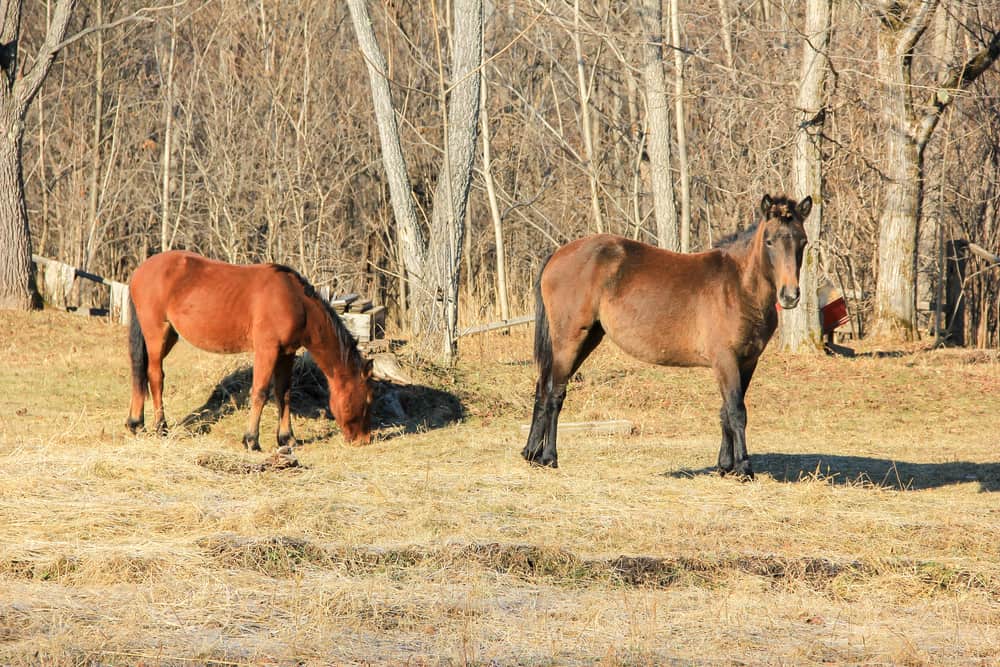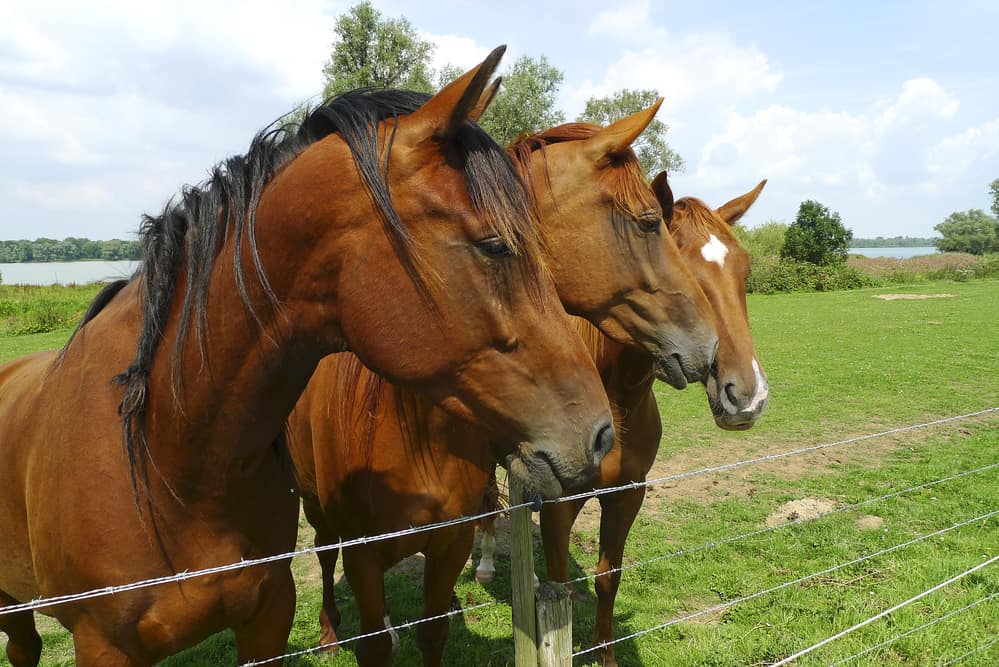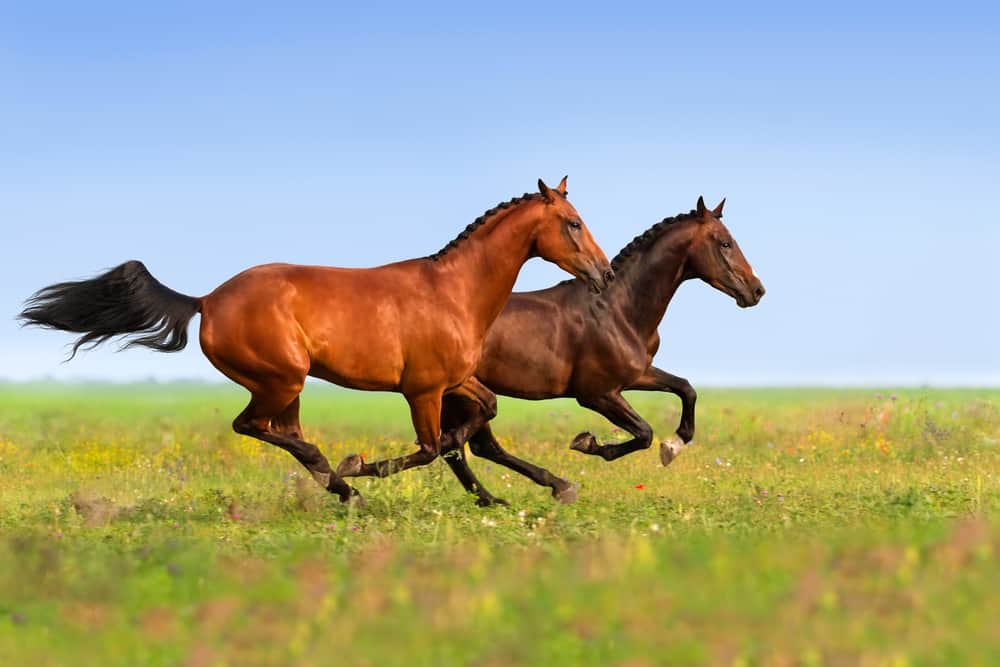Arabian horses are known for their endurance and ability to thrive in harsh desert conditions. But what do they eat in the desert? Arabian horses typically eat grass, hay, and other vegetation found in the desert. They may also consume small amounts of grain if necessary.
Some people believe Arabian horses can survive on very little food, but it’s essential to ensure they have access to water and nutrients to stay healthy. If you’re planning to travel with your Arabian horse in the desert, bring along enough food and water for both of you.

Table of Contents
Some History and Characteristics of the Arabian horse
The Arabian horse is known for its beauty and strength. It has a long and fascinating history, dating back thousands of years. This breed is versatile and can be used for many different purposes. It is famous all over the world and is considered to be one of the best breeds of horses available.
The Arabian horse is thought to be descended from the wild horses of the Arab region. These horses were rugged, hardy, and able to withstand the harsh conditions of the desert. They were also known for their endurance and could travel long distances without tiring. The first Arabian horses were brought to Europe in the 7th century, and they quickly became popular with the nobility.

Arabian horses were bred with other breeds to create new strains, such as the Andalusian and the Barb. The Arabian horse is known for its distinctive head shape, long, straight nose, and large eyes. It also has a relatively short back and compact body. The coat is usually bay, black, or chestnut, and the mane and tail are often very long and thick.
The Arabian horse is a popular breed all over the world and is used for a variety of purposes. It is an excellent riding horse for dressage, show jumping, and eventing. Arabian horses are also famous as workhorses and are often used in police work, and search and rescue operations.
If you are looking for a beautiful, intelligent, and versatile horse, then the Arabian horse is the breed for you. With its long and fascinating history, this breed is sure to add a touch of class and style to any stable.
How do Arabian horses survive in the desert?

Arabian horses have evolved to be able to survive in the desert. One way they can do this is by having a higher tolerance to dehydration. In addition, their coats and hooves have adapted to help protect them from the harsh environment. Their coats keep them cool in the heat, and their feet can withstand the hot sand and rocks.
Arabian horses are also able to go without water for long periods. They can do this by storing water in their bodies, as well as by eating plants that have high water content.
The Arabian horse is a fantastic animal that has adapted to survive in one of the harshest environments on earth – the desert. By having a higher tolerance to dehydration and adaptations to their coats and hooves, they can withstand extreme conditions and thrive.
Can Arabian horses go days without water?
Yes, Arabian horses are some of the most versatile breeds in the world. They can quickly adapt to different climates and terrains and even go for days without water. This makes them perfect for traveling and exploring new places. Also, their strong and slender build allows them to be very agile, making them ideal for many sports and activities.
The Arabian horse is the perfect breed if you are looking for a beautiful, intelligent, and versatile horse. With its long and fascinating history, this breed is sure to add a touch of class and style to any stable.
Survival Tips for Horse and Rider

When embarking on a horseback riding adventure, it’s essential to be aware of the risks and take the necessary precautions to ensure a safe experience. Here are some survival tips for both the horse and the rider:
For the Horse:
- Make sure you are familiar with your surroundings and keep an eye out for hazards such as holes, rocks, or branches.
- Stay alert and be prepared to take evasive action if necessary.
- Keep your balance at all times – if you get too far forward or back, you could lose control of the horse.
- Don’t fight the horse – let it move in the direction it wants, and use your body weight to guide it.
- Be especially careful when crossing water – horses can quickly lose footing on wet surfaces.
- If you’re riding at night, ensure you have a good flashlight and take care when crossing roads or other areas with potential danger.
For the Rider:
- Ensure your horse is adequately groomed and tacked up before you ride it – this will help reduce the risk of slipping or falling off.
- Always wear a helmet – it could save your life in an accident.
- Stay in control of your horse at all times – don’t let it run off or get out of hand.
- Don’t try to do too much too soon – start slowly and progress gradually as you get more comfortable with riding.
- Be aware of your horse’s body language – this can help you avoid potential accidents or injuries.
- If you fall off, stay calm and return to the horse as soon as possible.
With these survival tips, horses and riders can enjoy a safe and fun riding experience.
Which breed of horse is best for the desert?
There are a variety of breeds of horses that are best suited for different environments. In the case of the desert, a species like the Arabian would be best-suited because of its natural inclination to conserve energy and its ability to go for long periods without water.
This breed is known for being tough and hardy, able to withstand harsh conditions that would defeat other species. The Arabian is an excellent choice if you’re looking for a horse to take into the desert.



